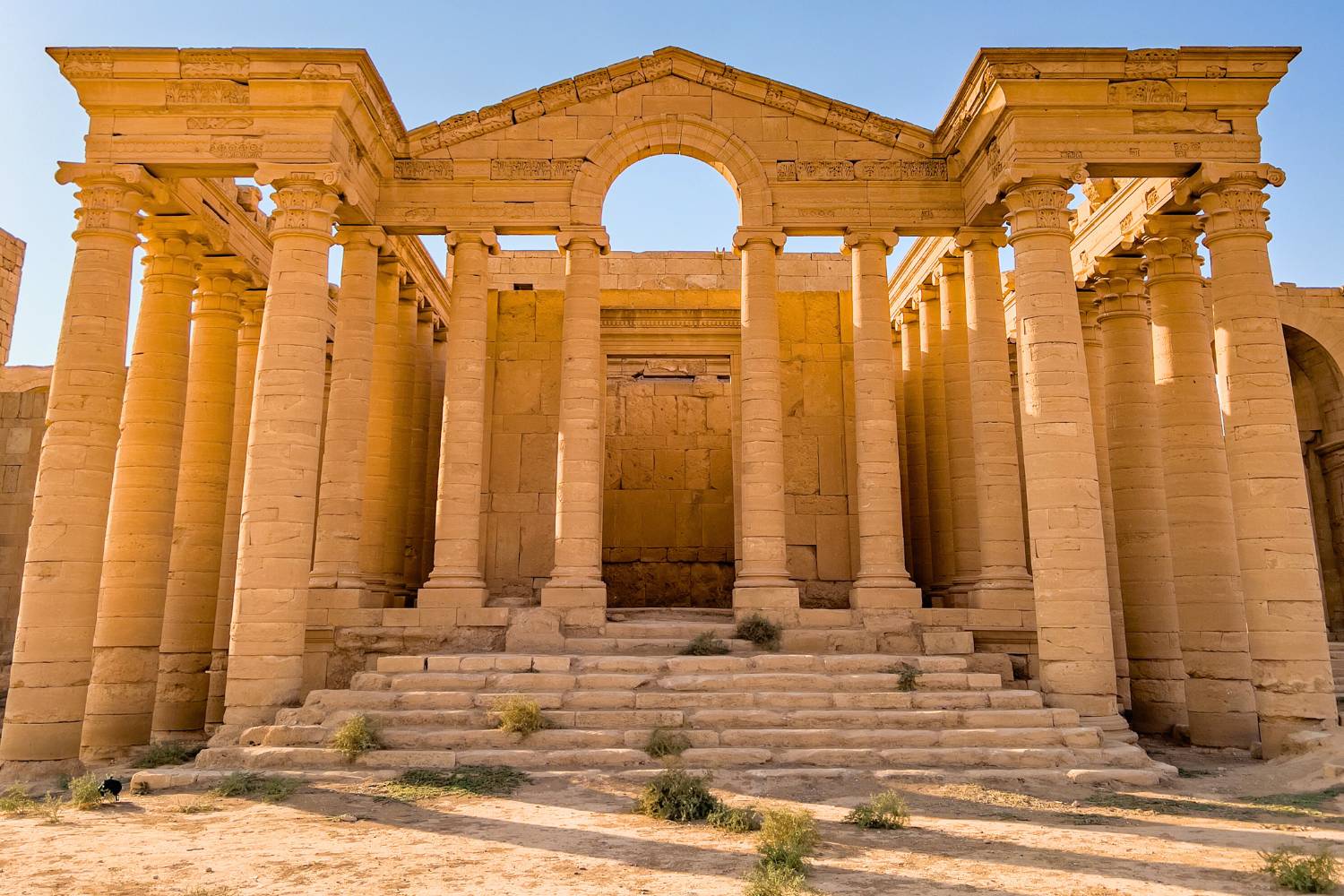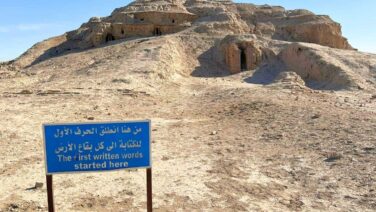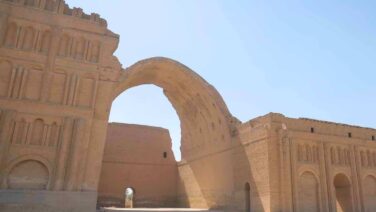Hatra, an ancient city located in modern-day northern Iraq, was a prominent center of the Parthian Empire and later a key part of the Arab Kingdom of Hatra. Known for its impressive fortifications and blend of Greco-Roman and Eastern architectural styles, Hatra stands as a testament to the cultural and historical fusion that characterized the ancient Near East. This UNESCO World Heritage site offers a unique glimpse into the grandeur and complexity of ancient civilizations.
Highlights
- Great Temple of Hatra: A significant religious site showcasing a blend of various architectural styles.
- Massive Fortifications: Impressive defensive walls that highlight Hatra’s strategic importance.
- Extensive Ruins: Remnants of public buildings, temples, and residential areas.
- Cultural Fusion: Unique architectural and cultural elements combining Greco-Roman and Eastern influences.
Historical Timeline
- circa 3rd century BC: Hatra is founded, possibly as a small settlement under the Seleucid Empire.
- 1st century AD: The city gains prominence under the Parthian Empire, becoming a major religious and trading center.
- 116 AD: Hatra successfully withstands a siege by Roman Emperor Trajan.
- 198 AD: The city repels an attack by Roman Emperor Septimius Severus.
- circa 240 AD: Hatra reaches its peak under the Arab Kingdom, known for its wealth and strong defenses.
- circa 241 AD: The Sassanian Empire captures Hatra, leading to its decline.
- 7th century AD: The city is abandoned, likely due to changing trade routes and political shifts.
- 19th century AD: Western explorers and archaeologists rediscover Hatra.
- 1985 AD: Hatra is designated a UNESCO World Heritage site.
- 21st century AD: Preservation efforts continue despite damage from recent conflicts.
Inhabitants and Rulers
Hatra was home to a diverse population, including Arabs, Parthians, and other ethnic groups. Key figures in Hatra’s history include:
- Sanatruq I: One of the earliest known kings of Hatra.
- Sanatruq II: Another significant ruler during the city’s peak period.
- Sassanian Emperors: Such as Shapur I, who conquered Hatra and incorporated it into the Sassanian Empire.
Architectural and Cultural Sights
1. Great Temple of Hatra
Why Important: The Great Temple is the most prominent structure in Hatra, featuring a blend of Greco-Roman and Eastern architectural styles. It served as a major religious center and is notable for its impressive size and intricate design.
2. Fortifications
Why Important: Hatra’s massive fortifications, including thick walls and defensive towers, highlight the city’s strategic importance and its ability to withstand sieges from powerful empires like Rome.
3. Temples and Public Buildings
Why Important: The ruins of various temples and public buildings in Hatra provide insight into the city’s religious and social life. These structures reflect the city’s wealth and cultural significance.
4. Residential Areas
Why Important: The remnants of residential areas offer a glimpse into the daily lives of Hatra’s inhabitants. These areas showcase the city’s urban planning and architectural style.
5. Sculptures and Inscriptions
Why Important: Numerous sculptures and inscriptions found in Hatra provide valuable information about the city’s history, religion, and culture. These artifacts reflect the artistic and intellectual achievements of Hatra’s inhabitants.
Geographic Importance
Hatra’s location in the Al-Jazira region (between the Tigris and Euphrates rivers) provided significant strategic and economic advantages. The city controlled key trade routes connecting the Roman Empire with the Parthian and later Sassanian Empires. Its position also made it a focal point for cultural exchange, blending influences from various civilizations.
Conclusion
Hatra, with its rich history, impressive architecture, and strategic importance, remains a key site in the study of ancient Near Eastern civilizations. From the grandeur of the Great Temple to the formidable fortifications, Hatra offers a profound glimpse into the cultural and historical fusion that defined the region. Exploring Hatra provides a deeper understanding of the Parthian and early Arab periods, showcasing the city’s contributions to the cultural and architectural heritage of the ancient world. Whether you are a history enthusiast or a curious traveler, the ancient city of Hatra is a captivating destination that continues to inspire awe and admiration.
Keywords: Ancient city of Hatra, Parthian Empire, Arab Kingdom of Hatra, Great Temple of Hatra, Hatra fortifications, Greco-Roman architecture, Eastern architecture, Mesopotamian history, Hatra ruins, UNESCO World Heritage site, Hatra archaeological sites, Iraq historical sites, Hatra cultural fusion, Sassanian conquest, Hatra strategic location.


